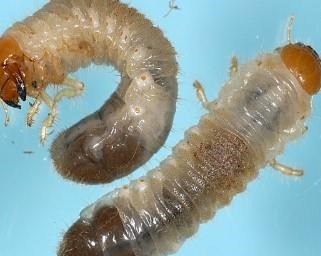By JOHN TYSON
Summer is here and with that comes the need for heat abatement on the dairy farm. It seems every summer I am in discussions with dairy producers about 'air exchange' vs 'air speed' and the importance of each in a heat abatement system.

What is Air Exchange?
Simply put it is replacing the air inside the shelter that contains animal heat, animal moisture, gasses, and other pollutants with outside air that is assumed to be 'fresher' with less animal heat, moisture, and pollutants. To do this there needs to be a pressure difference created between outside and inside the shelter. This can be done with a positive pressure system by pushing air into the shelter or by raising the inside pressure, which will cause air within the shelter to seek the lower outside pressure and move through planned exhaust outlets. The other option is a negative pressure system where the pressure inside the shelter is lowered using exhaust fans. Outside air then seeks its way into this lower pressure area through planned inlets in the shelter envelope.
What does Air Exchange do?
From a heat abatement perspective, the most important part of air exchange is the removal of excess animal heat from the shelter. Models have been used to predict that a high producing Holstein cow (1500-pound animal making 90 pounds of milk per day) will produce almost 3000 BTU per hour of sensible heat at 70°F. Sensible heat refers to heat you can feel or sense. As this heat is transferred through convection to the surrounding air, the air is warmed. A rule of thumb from the HVAC industry is that it takes 200 BTU per hour of heat to warm 100 cfm (cubic feet per minute) of airflow by 2°F. So, if the goal is the maintain no more than a 2°F temp rise within the shelter, the heat abatement system needs to provide about 1500 cfm of air exchange per cow within the shelter. Air Exchange is the mechanism that removes the animal heat from the shelter.
What about Air Velocity?
Increasing the air velocity at the local animal level will increase the convective cooling ability of the animals themselves allowing improved sensible heat transfer to the surrounding air. The goal is to achieve an air velocity of 400 feet per minute (4.5 mph) at animal level in the shelter. This air speed can be achieved by placing circulation fans over the freestalls. A common rule of thumb is to space fans 8 to 10 times their diameter apart. While air speed at animal level increases the heat removal from the animal it does not increase the heat loss of the shelter, that takes air exchange.
For a heat abatement system to work properly, it needs both air exchange for the overall shelter as well as appropriate air velocity at the local animal level. Air speed removes the heat from the animal, which warms the surrounding air. Then air exchange removes that warmer air from the shelter and replaces it with fresh air to repeat the process.
Natural ventilation is often used in the northeast to provide air exchange. While generally being a lower cost option, it does come with challenges. Since natural ventilation is dependent on mother nature providing the wind needed to drive the system it can be undependable on a hot day. The size of the wall opening is really the only factor under the control of the user. Therefore, during hot weather sidewall and end wall openings need to be maximized, along with exposure to any winds mother nature provides. As an example, if cows are housed in a typical 6 row freestall shelter with 16 ft sidewalls, it requires a constant 3 mph wind to provide the 1500 cfm per animal of air exchange needed for the shelter. However, if housed in a typical 3 row freestall shelter with 14 ft sidewalls, a constant 2 mph wind will provide the 1500 cfm per animal of air exchange.
Due to the undependably of natural ventilation in large dairy shelters during hot weather more dairies are using some form of mechanical ventilation to provide the shelter air exchange. Options include tunnel ventilation, cross ventilation, or positive pressure systems. If well designed and managed these systems can provide the high air exchange needed at the whole shelter level in a heat abatement system. Often circulation fans are still needed within the shelter to maintain high air speed at the local animal level.
In short, both air exchange and air velocity are needed in a heat abatement system. They play differing roles but are both critical for success in hot weather.
Source : psu.edu